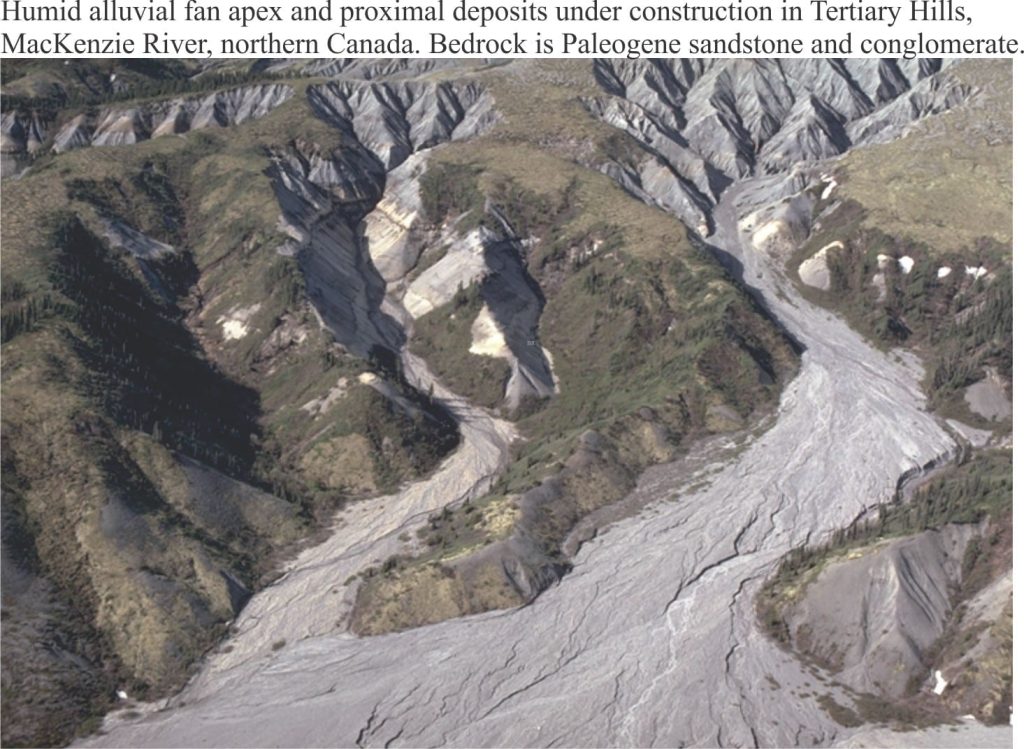
A look at alluvial fans in outcrop
This is part of the How To…series on describing sedimentary rocks – in this post describing and interpreting alluvial fan deposits in outcrop.
In these examples the term alluvial fan refers to coarse-grained sediment bodies that:
- are linked to elevated, commonly rugged terrain where the rate of sediment supply and aggradation are controlled by tectonics, climate, and the size of the drainage basin,
- where drainage basins in the source area are relatively small,
- have broadly radial geometry with longitudinal and lateral extents measured in 100s of metres to a few kilometres,
- have high depositional slopes (several degrees),
- where sediment is delivered via a single, commonly incised (canyon-like) channel at the fan apex, and
- where sediment supply is episodic and usually associated with significant precipitation events (e.g. flash floods).
Distributive fluvial systems, or fluvial fans, are not included here (see references below).
Deposition on alluvial fans is dominated by debris flows and hyperconcentrated flows. The examples here represent two climate extremes: Arid to hyperarid fans from the Pleistocene-Holocene fans of Death Valley, California and the Chilean Altiplano, and humid fans from a modern drainage basin in Yukon and the Middle Eocene in Arctic Canada . The images focus on stratification, texture and sedimentary structures.
Additional photos of alluvial fan facies are collated in the Atlas of alluvial fans
Related links in this series on outcrop description
Sedimentary structures: coarse-grained fluvial
Sedimentary structures: fine-grained fluvial
Sedimentary structures: Mass Transport Deposits
Sedimentary structures: Turbidites
Sedimentary structures: Shallow marine
Sedimentary structures: Stromatolites
Volcanics in outcrop: Lava flows
Volcanics in outcrop: Secondary volcaniclastics
Volcanics in outcrop: Pyroclastic fall deposits
Other useful links
Describing sedimentary rocks; some basics
Measuring a stratigraphic section
Alluvial fan deposits contain a huge range of grain sizes, from boulder to clay, so it is worthwhile brushing up on the Wentworth and Phi grain size scales.
Grain size of clastic rocks and sediments
Some controls on grain size distributions
The first three diagrams show some basic sediment descriptors and terminology, a typical stratigraphic column drawn from outcrop data, and a simple graph of stress versus strain rate (i.e. rate of deformation) showing the basic rheological character of sediment-water flows. These are your starting points for describing and interpreting sedimentary rocks and sedimentary structures in outcrop, hand specimen, and core.
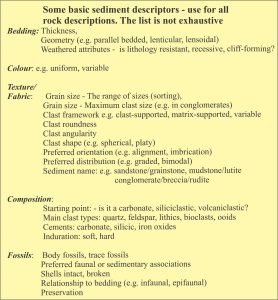
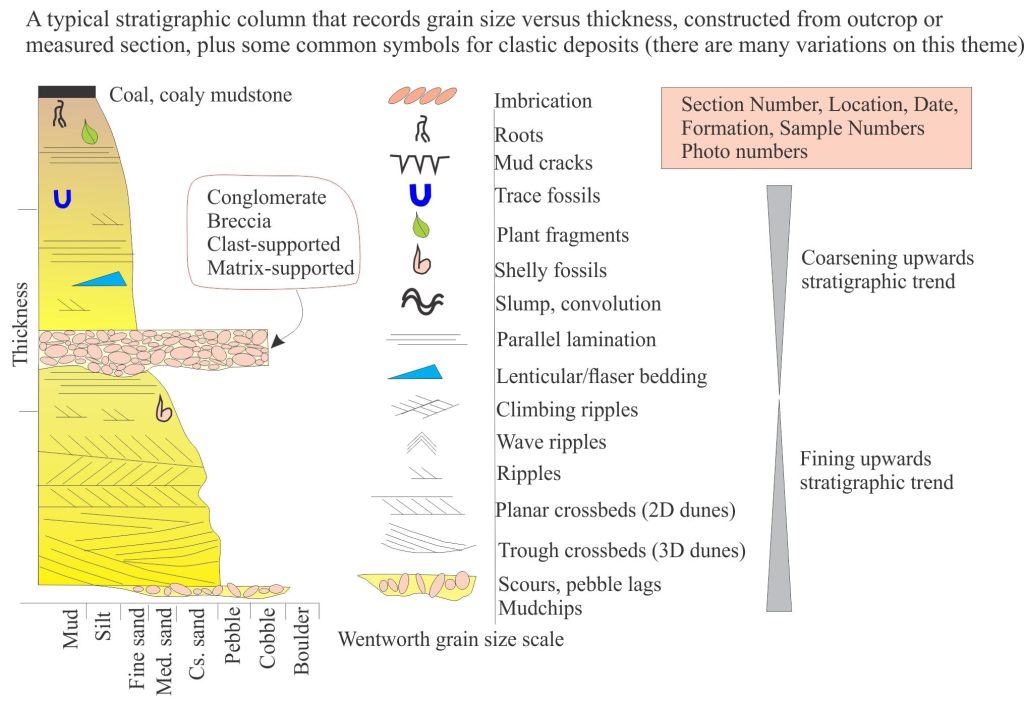
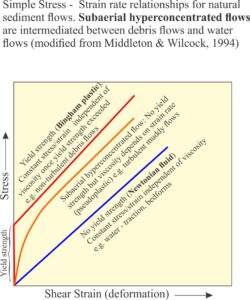
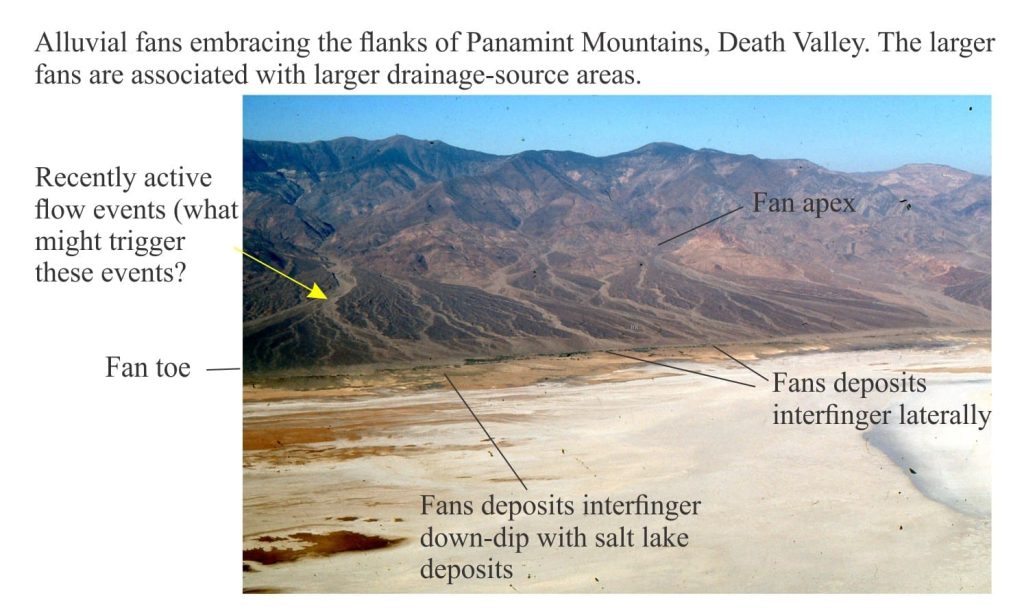
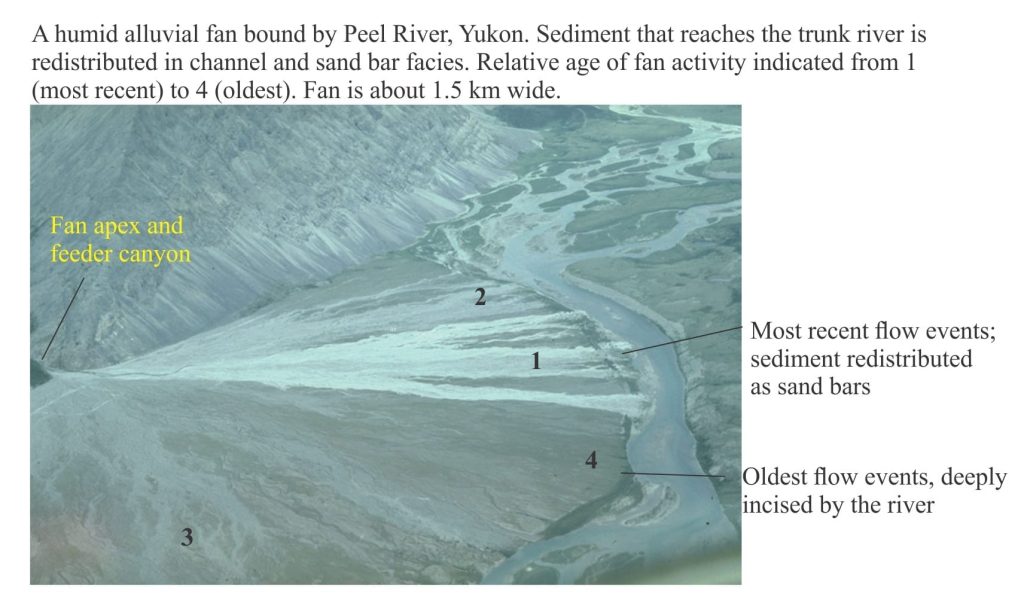
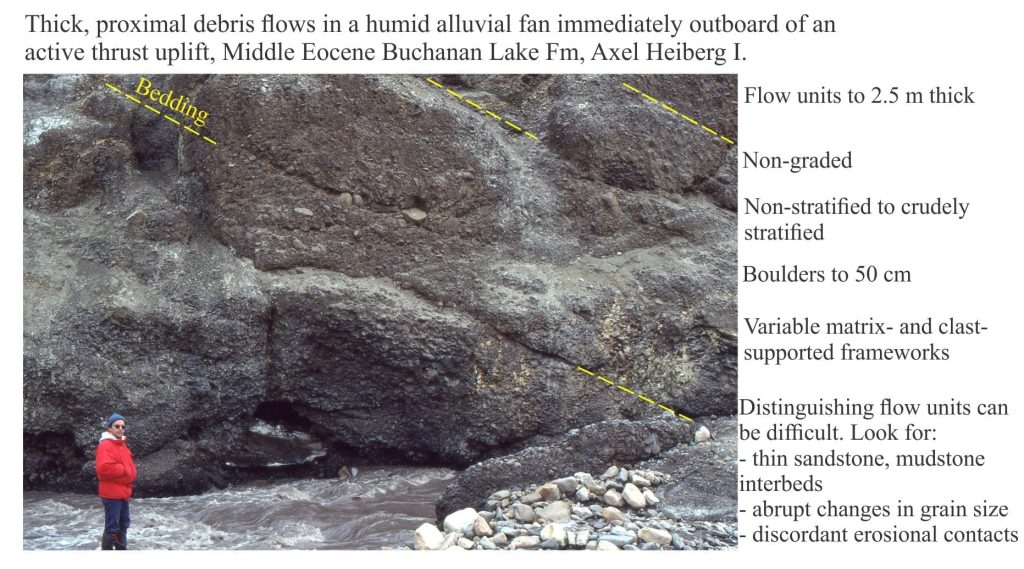
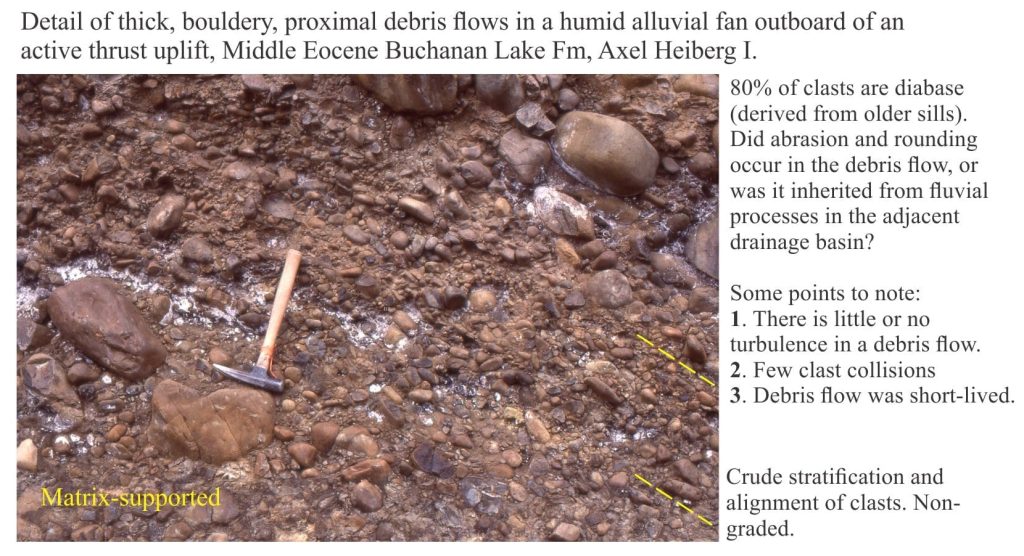
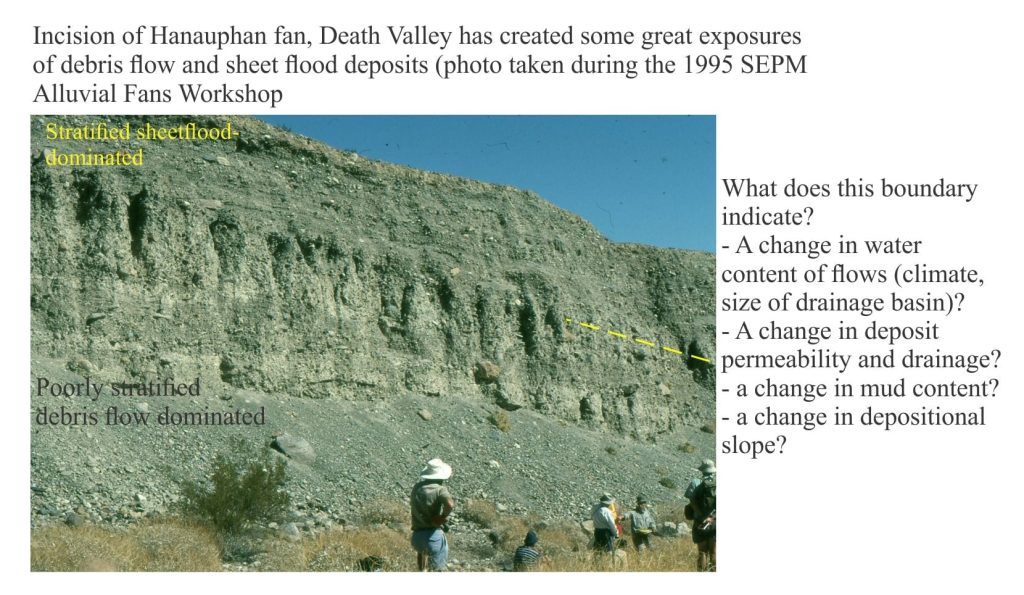
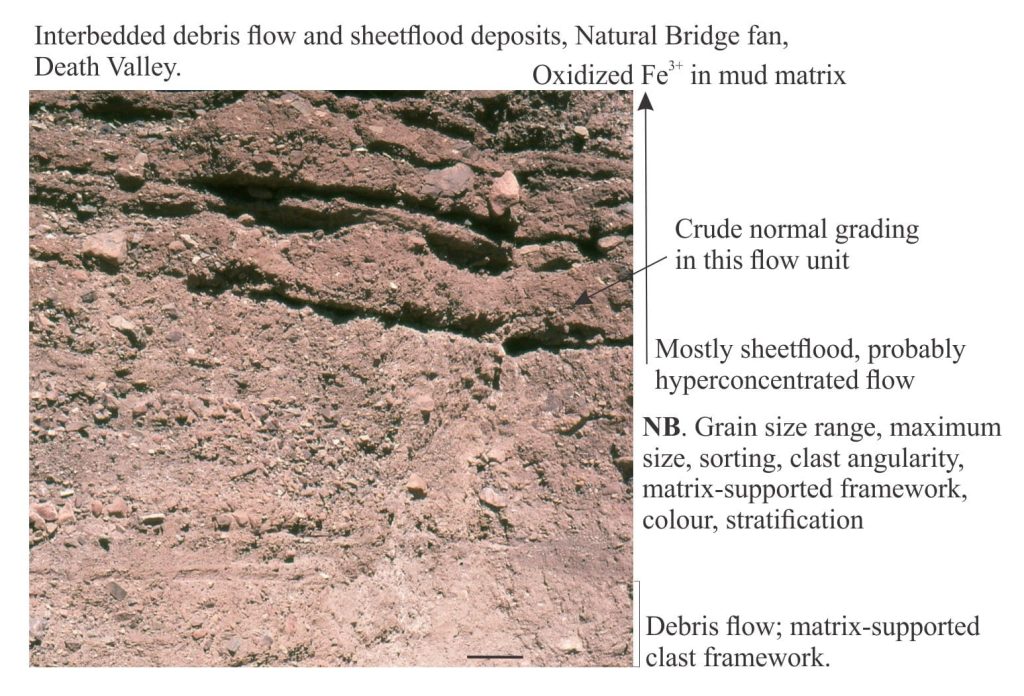
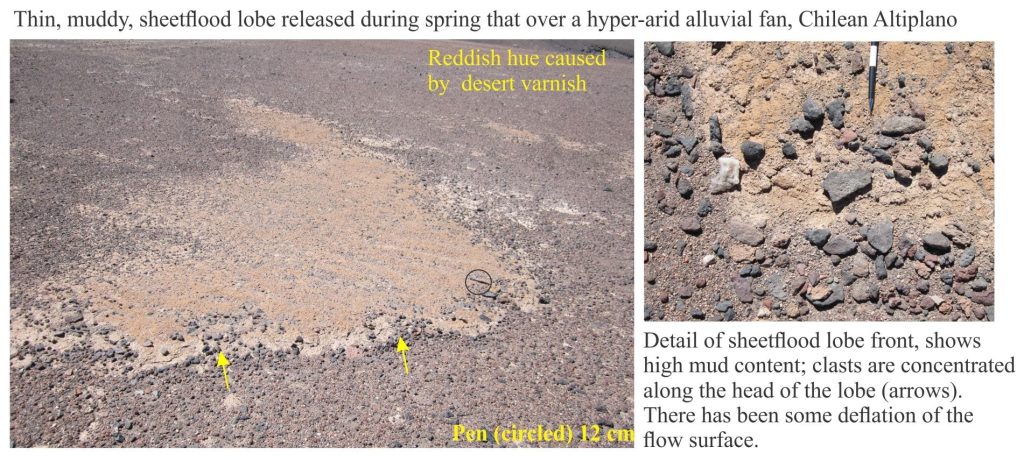
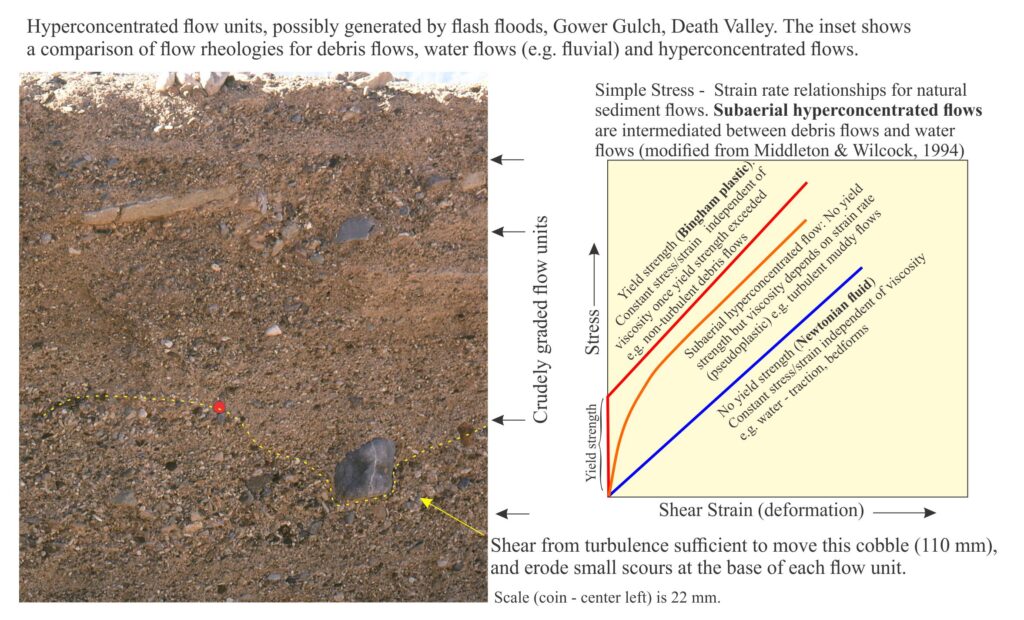
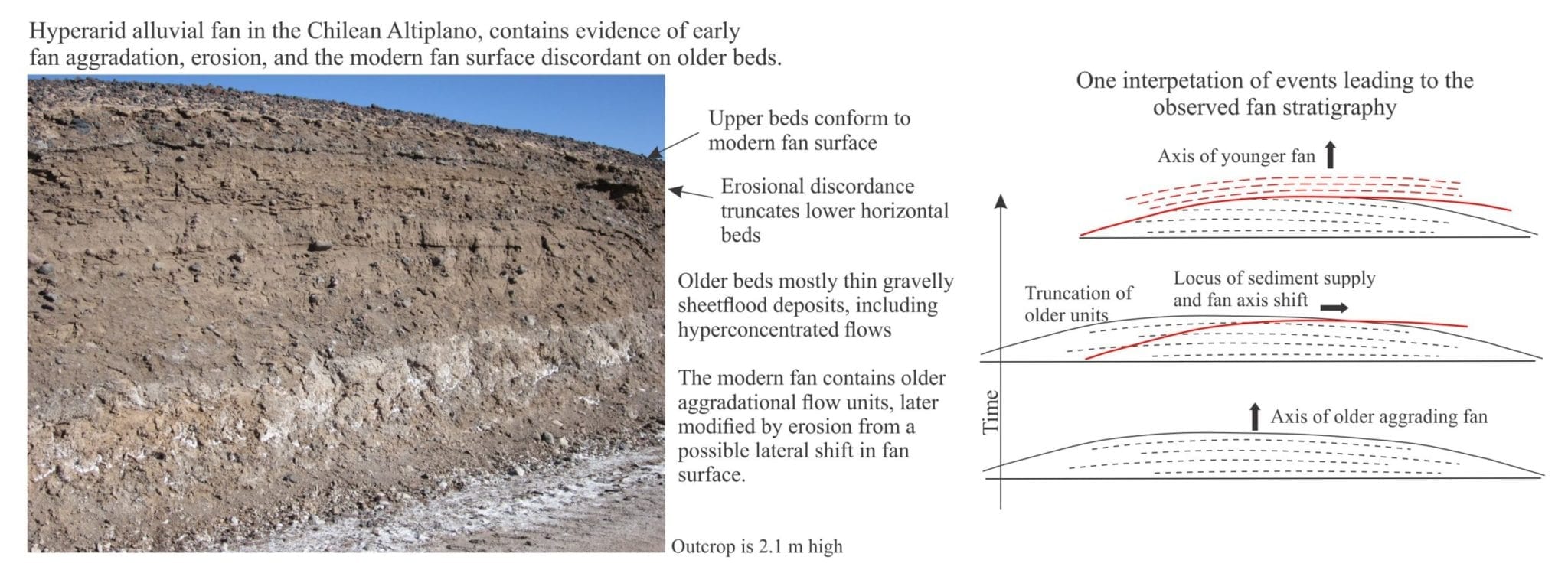
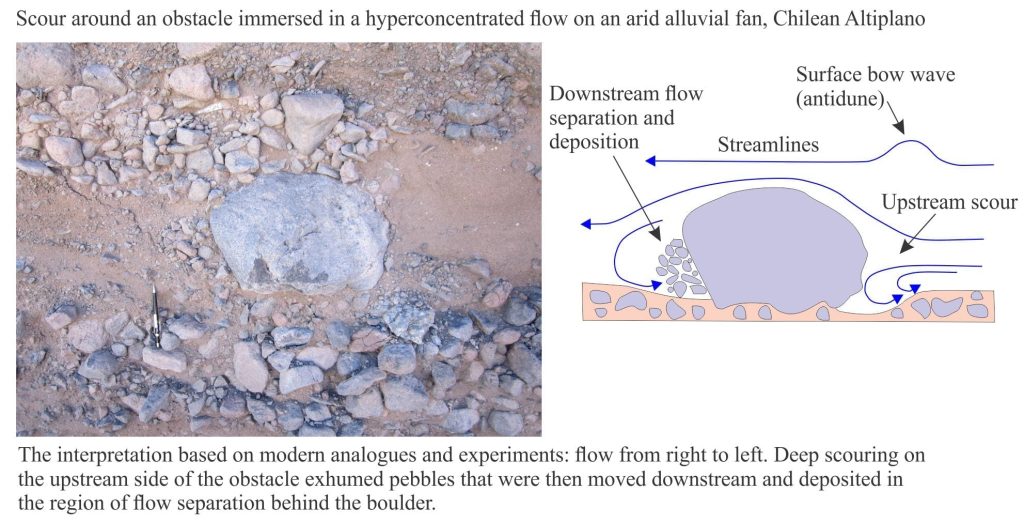
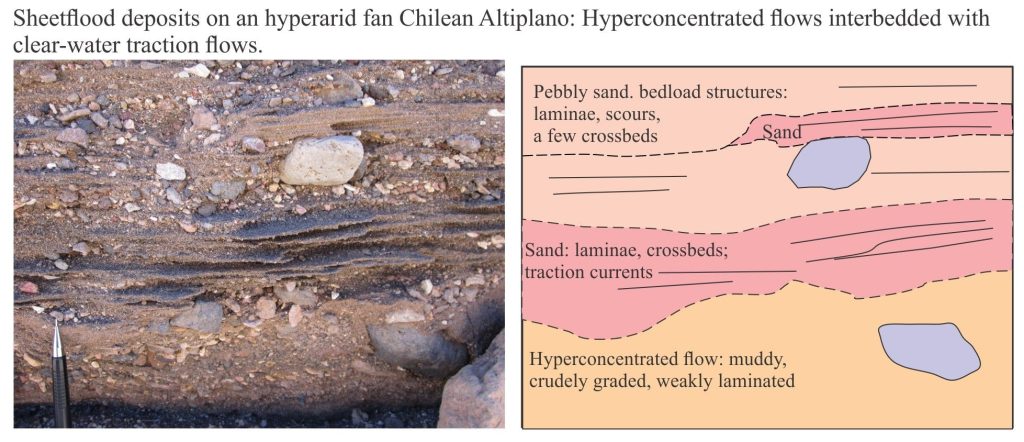
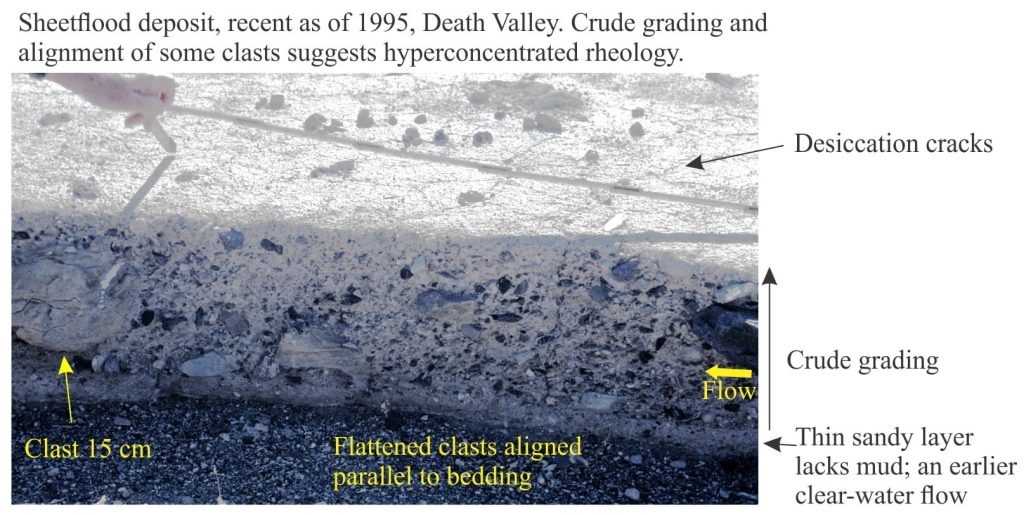
References
T.C. Blair and J.G. McPherson, 1994.Alluvial fans and their natural distinction from rivers based on morphology, hydraulic processes, sedimentary processes, and facies. Journal of Sedimentary Research, v. A64, p. 451-490. An early but excellent analysis; although some comparisons have changed as emphasized in the papers cited below. Available for download
A.M. Harvey, A.E. Mather and M. Stokes. (Eds.). 2005. Alluvial Fans: Geomorphology, Sedimentology, Dynamics. Geological Society London, Special Publications 251
G.V. Middleton and P.R. Wilcock, 1994. Mechanics in the Earth and Environmental Sciences. Cambridge University Press.
D. Ventra and L.E. Clarke, 2018. Geology and geomorphology of alluvial and fluvial fans: current progress and research perspectives. In, D. Ventra and L.E. Clarke (Eds.), Geology and geomorphology of alluvial and fluvial fans: Terrestrial and Planetary Perspectives. Geological Society London, Special Publications 440. Open Access
G.S. Weissmann et al. 2011. Alluvial facies distributions in continental sedimentary basins – distributive fluvial systems. In: Davidson S.K., Leleu S. & North C.P. (eds) From River to Rock Record. SEPM, Special Publications, 97, 327–355. Free access

















